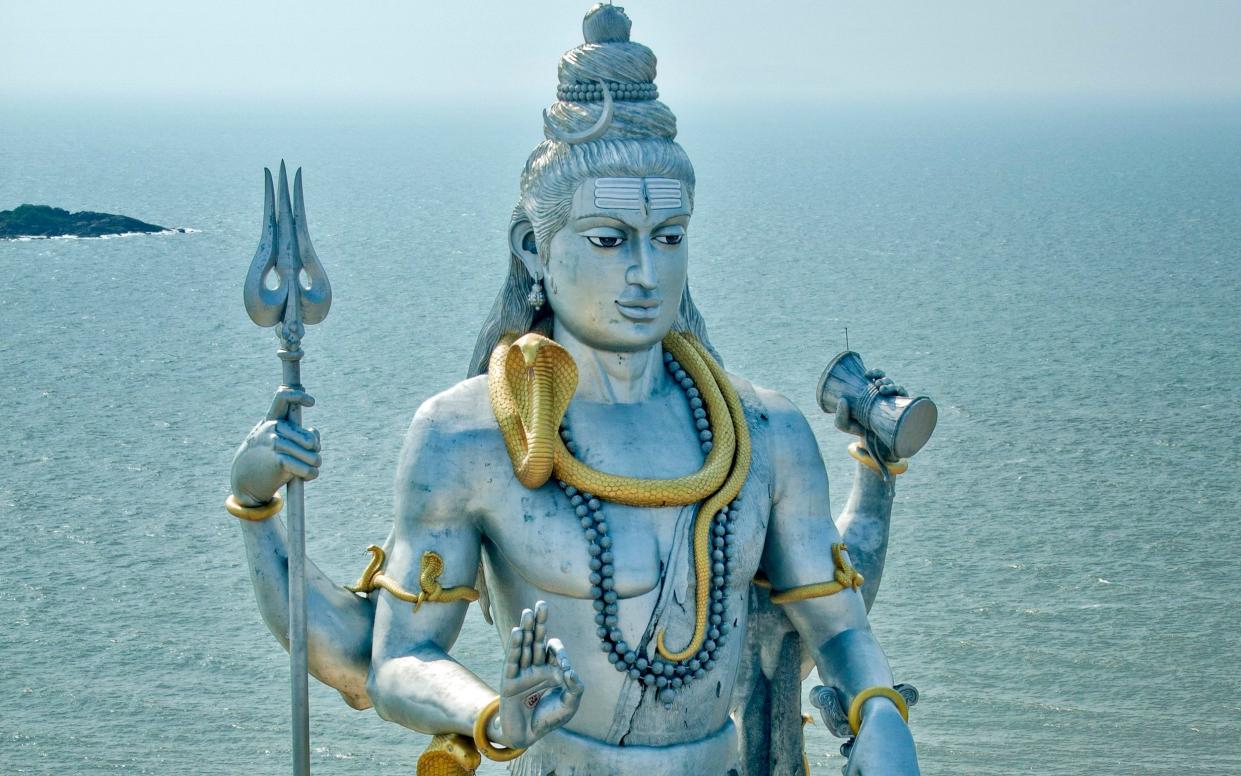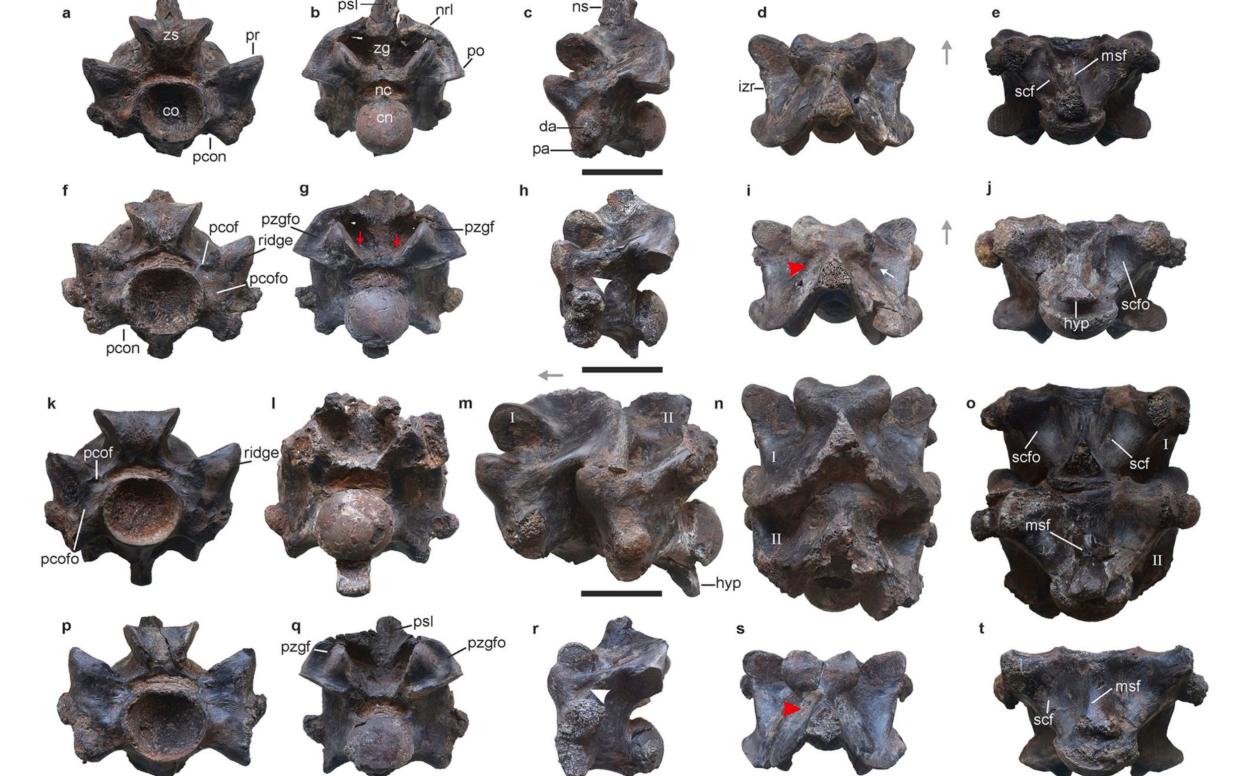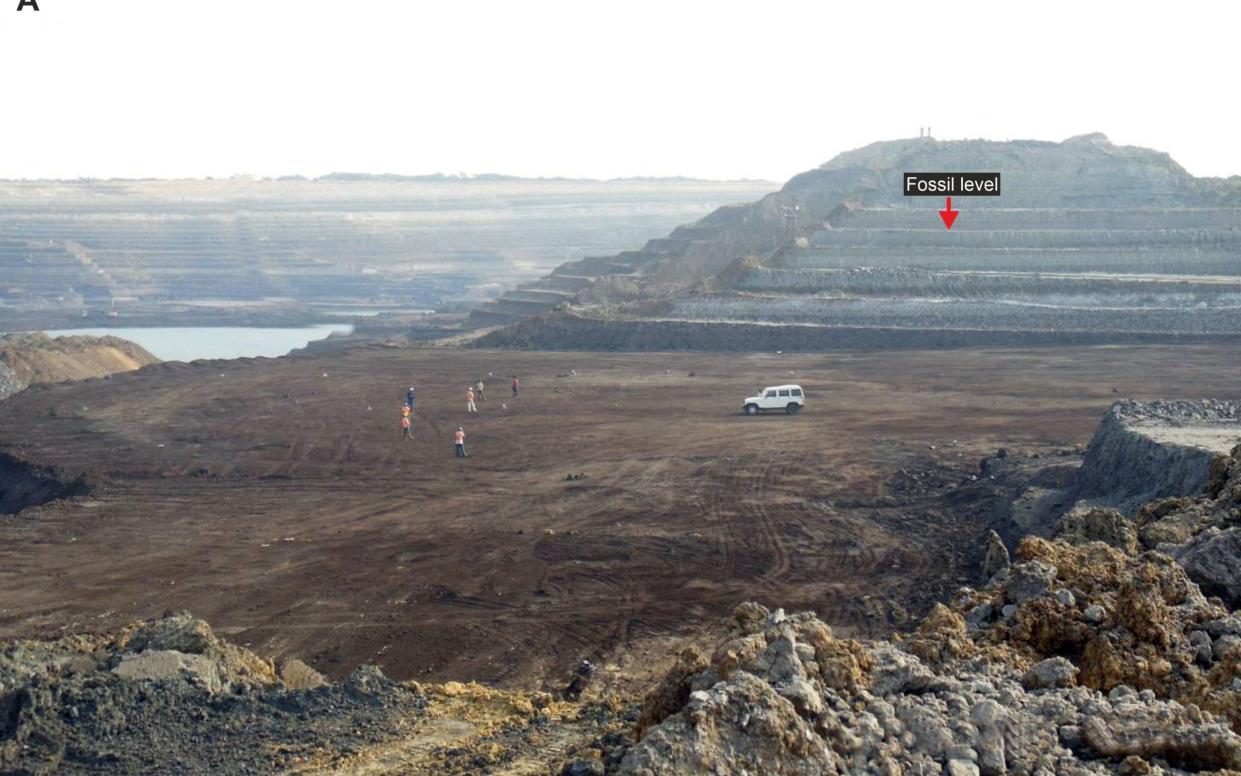Giant prehistoric snake longer than a T-Rex found in India

A giant prehistoric snake that was longer than a Tyrannosaurus rex has been unearthed in an Indian mine.
The fossil vertebrae have been proven to be the remains of one of the largest snakes that ever lived, a monster estimated at up to 15 metres (49 feet) in length that prowled the swamps of what is now India around 47 million years ago.
Scientists said on Thursday that they have recovered 27 vertebrae from the snake, including a few still in the same position as they would have been when the reptile was alive.
They said that the snake, which they named Vasuki indicus after the snake king associated with the Hindu deity Shiva, would have looked like a modern-day large python and would not have been venomous.
The mine is in the Panandhro area of the Kutch district in western India’s state of Gujarat.
“Considering its large size, Vasuki was a slow-moving ambush predator that would subdue its prey through constriction like anacondas and pythons,” said Debajit Datta, lead author of the study published in the journal Scientific Reports.
“This snake lived in a marshy swamp near the coast at a time when global temperatures were higher than today.”

Because of the incomplete nature of the Vasuki remains, the researchers gave an estimated length range of 11-15 metres and a rough estimate of a metric ton in weight.
Vasuki rivals in size another huge prehistoric snake called Titanoboa, whose fossils were discovered in a coal mine in northern Colombia, in South America, as announced in 20
etric tons, lived 58-60 million years ago. The reticulated python is the longest extant snake, sometimes measuring 20-30 feet (6-9 metres).
“The estimated body length of Vasuki is comparable to that of Titanoboa, although the vertebrae of Titanoboa are slightly larger than those of Vasuki. However, at this point, we cannot say if Vasuki was more massive or slender compared to Titanoboa,” said palaeontologist and study co-author Sunil Bajpai, a professor at IITR.
These huge snakes lived during the Cenozoic era, which began after the dinosaur age ended 66 million years ago.
Perhaps the largest-known Tyrannosaurus rex is a specimen named Sue at the Field Museum in Chicago, at 40.5 feet (12.3 metres) long, though a T-Rex would have been more massive than these snakes.
The biggest Vasuki vertebra was around 4.5 inches (11.1 cm) wide. Vasuki appears to have had a broad, cylindrical body perhaps around 17 inches (44 cm) wide. The skull was not found.

“Vasuki was a majestic animal,” Datta said. “It may well have been a gentle giant, resting its head on a high porch formed by coiling its massive body for most parts of the day or moving sluggishly through the swamp like an endless train. In some ways it reminds me of (fictional giant snake) Kaa from The Jungle Book.”
The researchers are not sure what prey Vasuki ate, but considering its size it could have included crocodilians. Other fossils in the area included crocodilians and turtles, as well as fish and two primitive whales, Kutchicetus and Andrewsiphius.
Vasuki was a member of the Madtsoiidae snake family that appeared roughly 90 million years ago but went extinct about 12,000 years ago. These snakes spread from India through southern Eurasia and into north Africa after the Indian subcontinent collided with Eurasia around 50 million years ago, Bajpai said.
This was a dominant snake family during the dinosaur age’s latter stages and into the early Cenozoic before its diversity dropped, Bajpai added.
“Snakes are amazing creatures that often leave us stunned because of their size, agility and deadliness,” Datta said.


